Why you should visit Thursday Island
The 280 isles in Torres Strait are a melting pot of history, culture and faith and are perfect for exploring.
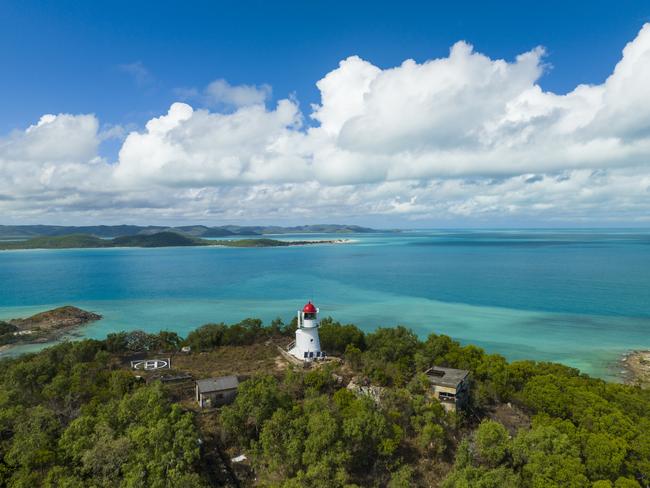
You wing it north from Cairns, up the endless, almost people-less, Crocodile Coast – as Queensland doesn’t call its wild eastern flank – to reach the pointy end of Australia, Cape York Peninsula. It resembles, nevertheless, the gnarled snout of a “snapping handbag”; a croc contemplating a feast of Torres Strait Islands.
We land at Horn Island, the airport stepping stone to Thursday Island, aka TI, the hub of the Torres Strait. Of the approximately 280 isles, all Australian territory, scattered across this 150km hyphen between Cape York and Papua New Guinea, TI is the most populous, with 3000 residents.
It’s almost too easy to slip into “ailan life” (island life). Greet anyone here and they respond, which obviously has been going on for centuries. A quick scan of faces in the street, on the pier or in the pub shows blended Aboriginal, Melanesian, Caucasian, Chinese, Malay, Japanese and Polynesian ancestry. As recently as 8000 years ago, a land bridge connected PNG to Cape York, with people migrating freely across it.
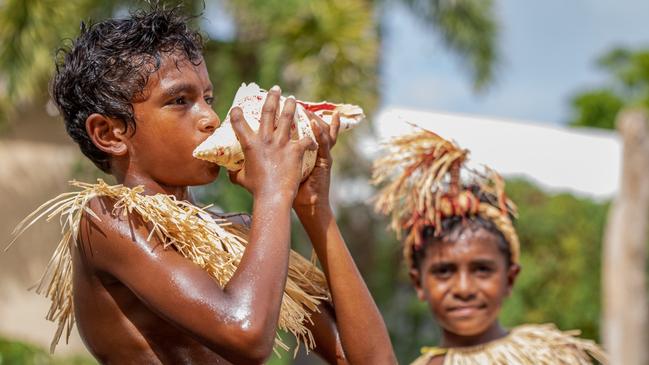
“One foot on the land and one foot in the sea,” a phrase I hear several times, summarises the history and cultures of the area. While sailing from Peru to Manila in 1606, navigator Luis Vaez de Torres, a tail-ender of the Spanish conquistador era, became the first European to navigate the strait. The contemporary local name for his eponymous waterway is Zenadth Kes.
Much later, in 1789, the ubiquitous William Bligh, in a post-mutiny funk and leaky rowboat, arrived here, heading west to Batavia minus his Bounty but still in full-on naming-rights mode. He tagged islands according to the day of the week on which he “discovered” them. Thus, Torres Strait has Tuesday through Friday islands and, naturally, a Bligh Passage. TI, to its Kuarareg Aboriginal custodians, is and always was Waiben.

By chance, I’ve arrived on Waiben Island’s annual big day out, The Coming of the Light, a July 1 celebration of the arrival, in 1871, of the first white Protestant missionary to survive the threat of decapitation. Landing on Erub Island, he was sufficiently on-song to make an impact among the islands’ traditionally warring tribes. To cut a long story short, in embracing Christianity, the Strait’s Melanesian warriors began to put aside centuries of raiding, payback, head-hunting and sorcery.
“Thank God for the First Missionaries,” says a plaque at TI’s historic Anglican cathedral, where the big festival’s holy mass, hymn singing and feasting are in full swing. In the cities of secular, 21st-century Australia, the statement might sound unfashionably colonial, but not to citizens of the Torres.
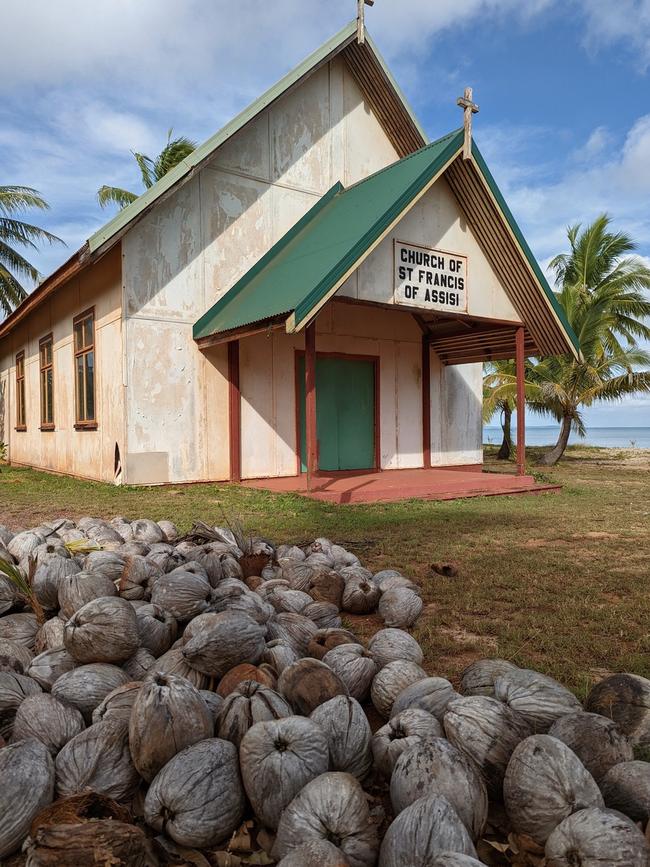
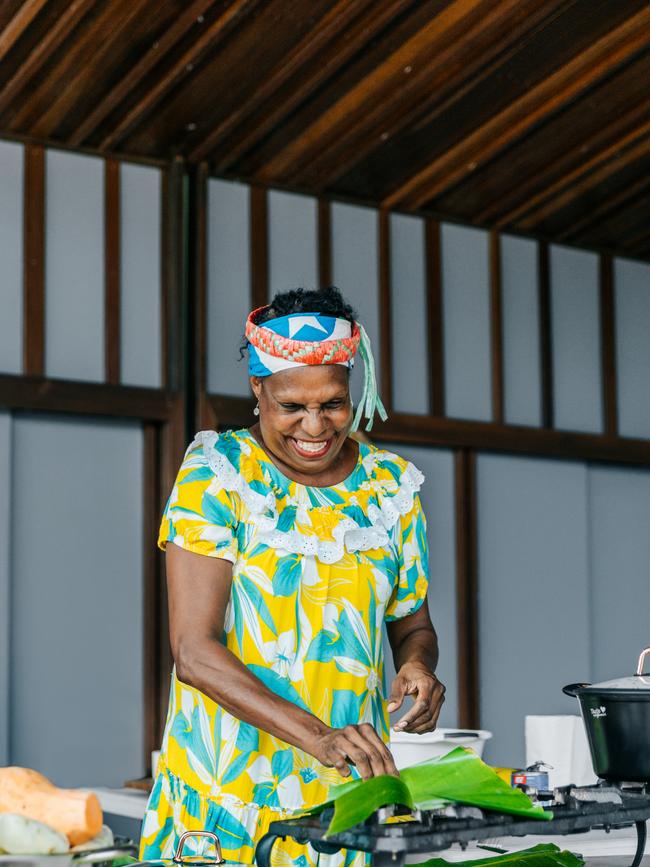
“The ripple effect of The Coming of the Light levelled the inter-island animosities,” explains Uncle Willy Wigness, 61, a Torres Strait Islander-Kaurareg Aboriginal elder and activist. We sit under a tree beside the 1891 church while Willy talks across topics ranging from claiming local sovereignty to his proud family history – “My grandmother was the choir lead singer and my grandfather the bell-ringer”.
Contemporary clan totems such as rugby league’s Maroons and Blues state teams are another conversation diversion. “We’ve sublimated our clan conflicts to sport,” he quips.
Local tourism operator John Palmer and I demolish a meal of scrumptious crumbed Spanish mackerel at TI’s seafront Grand Hotel.
“At present, this region attracts predominantly adventurous over-50s,” he notes. Many of them are drawn by the history of the islands and the nearby mainland, spanning Indigenous culture, pearling, pioneer days and the Pacific War, not to mention fishing.
TI has an abundance of tour options. Alternatively, you can just kick back and do zip. I manage both, retreating in the evening to a well-appointed Island Villas bungalow. Tall, dreadlocked Masigalgal man Fraser Nai, co-founder with John Palmer of the Strait Experience tourism venture, joins me for a sunset drink on my villa’s elevated deck.
Originally from Masig Island in the Strait’s central islands cluster, Fraser exudes endless enthusiasm not only for TI but also the region’s spectacular northern isles once they become more visitor-accessible. He sketches images of volcanic islands, lagoons and villages whose distinct Straits Melanesian culture is neither Papua New Guinean nor Aboriginal Australian.

I find plenty to do on TI. A unique crayfish toastie at Joey Laifoo’s Island Stars cafe is my lunchtime entree to a traditional dance performance by an energetic local company. Later, another Laifoo, Dirk, of Torres Strait Eco Adventures, shows me around the main historic sites, including the restored Green Hill Fort with its cannon and subterranean museum. Last stop is the colourful TI cemetery where, among others, are interred about 600 Japanese divers who died during the perilous era of pearl-shell harvesting.
With time running out, I take the ferry across to Horn/Ngarupa Island to meet historian and raconteur Dr Vanessa Seekee, of Torres Strait Heritage Tours. Horn Island, I soon learn, was Australia’s most bombed place after Darwin during World War II.

During her tour, which is the best-informed military-themed excursion I’ve done anywhere, we visit the zigzag slit trenches and a restored 3.7-inch anti-aircraft gun that protected Australia’s most advanced World War II operational air base. Standing beside the poignant wreckage of a crashed US B-17 Flying Fortress bomber, Vanessa keeps the anecdotes flowing, evoking the savage dogfights that erupted overhead between American Kittyhawk and Japanese Zero fighters.
Today, 600 people live on snoozy Horn Island, but during the war it was home to 5000 Allied servicemen and nine female nurses. A post-war roll-call noted that of the nurses, five married servicemen and one joined a nunnery.
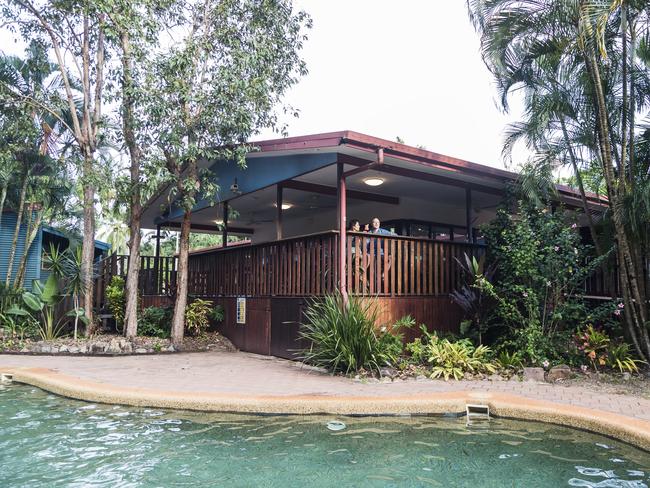
Cape York Peninsula is a hot destination, attracting 80,000 annual visitors to its tip, Pajinka. I take the one-hour ferry ride from the islands across to the mainland and Bamaga town, the launching point for excursions. Based there in a creek-side garden bungalow at Cape York Peninsula Lodge, I sign up for trips to Fruit Bat Falls and the visitor mecca, The Tip. However, the journey to the former is an anticlimax. The cable-punt crossing of the narrow Jardine River is a novelty, with the possibility of crocs, and the falls offer a refreshing (croc-free) dip, but our visits to several Indigenous communities are cancelled due to sorry business.
The trip to The Tip, the top of Australia, 35km northeast of Bamaga, is far better. In local language, the Tip is Pajinka, “The Mother”, and like much of the Northern Peninsula Area and the islands, it is covered by native title. Our Indigenous driver-guide, being in his own clan territory, is in expansive yarn-sharing form.
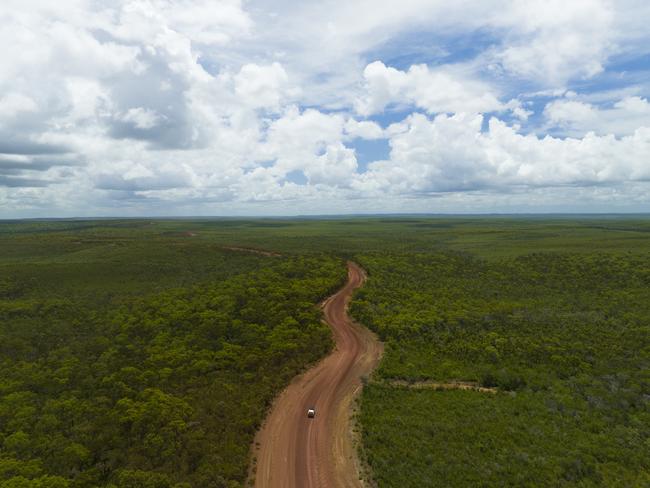
The long drive north from Cairns to the land’s end is more than a box-tick excursion for hardy nomads with a thousand-kilometre stare and a four-wheel dust-bucket. For many, it is a rite of Australian passage; a long-haul celebration of continent and country.
We make the 20-minute, low-tide pilgrimage around the rocky shoreline to reach our mainland’s ultimate point. A simple metal sign attests “You are now standing at the northernmost point of the Australian continent”. A box-ticked photo-op, certainly, but also much more; a moment of presence, reflection, gratitude.
In the know
On Thursday Island, the most up-market accommodation is the self-catering, two-bedroom bungalows of Island Villas; from $360 a night.
The island’s Grand Hotel has a bistro and modern rooms, some with sea views; from $280.
Bamaga’s Cape York Peninsula Lodge offers quality, self-contained cabins in lush grounds; from $260.
A broad range of multi-island packages is available through Strait Experience. On Horn Island, see Torres Strait Heritage Tours, while Torres Strait Eco Adventures is the go-to on TI. Tours from Bamaga to Pajinka or Fruit Bat Falls, booked through Cape York Peninsula Lodge, are $300 a head
March and October is the dry season. Fly via Cairns to either Bamaga on Cape York Peninsula or Horn Island for Thursday Island. Most islands further north have few visitor facilities and require entry permission. Flights can be unreliable, so avoid tight onward connections, book with a single airline and have travel insurance.
John Borthwick was a guest of Tourism and Events Queensland.

To join the conversation, please log in. Don't have an account? Register
Join the conversation, you are commenting as Logout